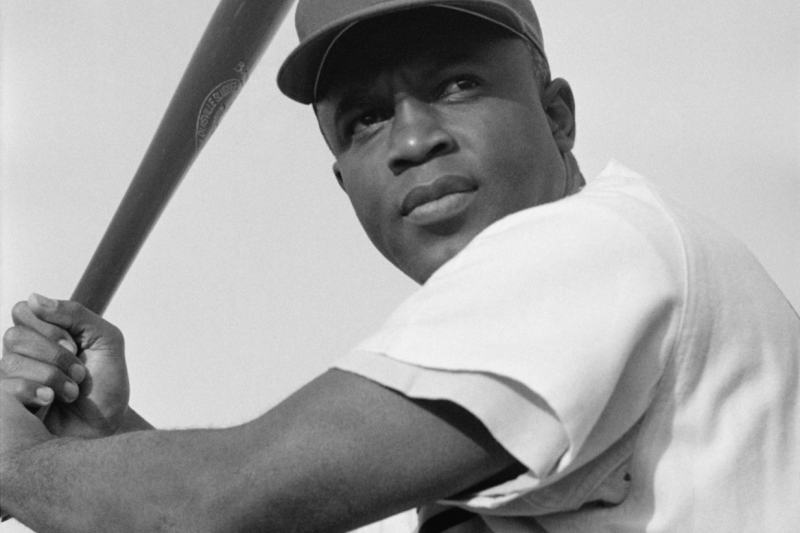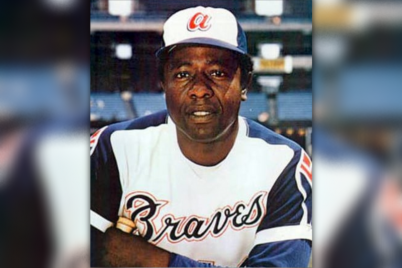BY FRANK DROUZAS, Staff Writer
As the 114th edition of the Fall Classic is upon us, we take a look back at some of the most remarkable feats–from astonishing catches to dominating pitching performances to clutch four-baggers–that have forever earned a place in Series history.
Reggie Jackson blasts three
With a natural-born swagger and penchant for boastful remarks, Reggie Martinez Jackson carried the big stick to back up his words.
When he signed with baseball’s most revered team, the New York Yankees, and joined them for the 1977 season, the slugger was expected to provide the long-ball pop to help the Yanks win their first Series since 1962. Very aware of his star power, Jackson even averred that summer in a magazine interview that, “This team, it all flows from me. I’m the straw that stirs the drink.”
Those words did not go down so smoothly with some of his teammates.
But after winning their division and dispatching the Kansas City Royals in a hard-fought five-game series to capture the American League flag, the Yankees and Jackson had lined up a shot to win it all in the Fall Classic against the talented Los Angeles Dodgers. After edging the L.A. team in three of the first five games–in none of these contests did the Yanks beat their rivals by more than two runs–the boys in pinstripes stood poised to win it all in Game 6, as the city waited breathlessly to explode in celebration.
And Jackson provided the long-awaited spark–three of them to be exact. In a feat that will likely be unmatched as long as the game is played, Jackson belted not one, not two, but three home runs in succession to carry the Yankees to a convincing 8-4 victory and seal the Series win.
This display of power is more amazing as Jackson whacked these balls into orbit on only three pitches! Over three at-bats against three different Dodger hurlers, Jackson smashed the first pitches he saw into that stands and earned a nickname for his clutch hitting that has stuck with him through this very day–Mr. October.
Jackie Robinson swipes home
When Jackie Robinson stepped onto the field in 1947 to play in a major league baseball game, his entire race walked alongside him. And it was with lightning-quick steps that he raced from third base to steal home in Game 1 of the 1955 World Series, providing baseball history with one of its most exhilarating moments.
Born into a sharecropping family in Georgia, Robinson fulfilled his dream of competing alongside baseball’s best as he broke the color line in 1947 to play for the Brooklyn Dodgers. In 1955 the upstart Dodgers faced off against the New York Yankee team–a juggernaut the Dodgers had faced five times in the Series dating back to 1947. They had lost to the mighty Yankees every time.
Things looked bad for his team in the opening game as Robinson stood on third base with two out in the top of the eighth inning and the Dodgers down by two runs. Whitey Ford, one of the game’s greatest pitchers, stood on the mound and looked to deliver a 1-0 pitch to his trusty catcher, Yogi Berra. Looking antsy, the fleet-of-foot Robinson took quick steps up and down the third base line, in an apparent move to distract Ford.
But all that the revving up wasn’t just for show as Robinson, in a burst of speed, blazed straight for the plate to outrun the pitch that Ford had just fired to the plate. The beefy Berra shot up out of his crouch, ready to snag the ball and make the tag on the onrushing Robinson, heading right for him like an express train.
Robinson slid in a cloudburst of dirt just under the mitt of Berra. Safe! Believing he had nabbed his man, Berra briefly lost his mind and argued with the umpire’s call like a man possessed, but the call stood. Robinson’s quick thinking and even faster feet had pulled his team to within a run.
Though the Dodgers wound up losing that first game, with the help of Jackie Robinson’s daring, “go-for-broke” style, they finally felled the Yankees for the first time ever, winning the Series in seven games. Robinson’s display of pluck by stealing of home remains one of the most talked-about moments in Series history.
Bob Gibson fans 17
One of the most gifted and dominating pitchers ever to take the hill, Gibson went 22-9 in 1968 with an unfathomably low earned run average of 1.12. He had more than proven himself during the regular season but now came the pressure of baseball’s biggest stage.
As his St. Louis Cardinals faced the Detroit Tigers that fall in the Series, Gibson got the call for Game 1, up against fierce competition from his counterpart. Denny McLain of the Tigers was no slouch as he had notched 31 victories that year–the first pitcher to break 30 wins since 1934. Few pitchers wanted to go up against the fearsome Tiger hurler.
Everyone watching expected a duel for the ages, but Gibson had other ideas. He set an almost inconceivable pace when he struck out the six of the first seven batters he faced. Tossing his blazing fastballs and knee-buckling sliders, Gibson mowed them all down and took no prisoners.
He wound up pitching a complete game and struck out a minimum of two hitters on six of those nine innings! McLain not only couldn’t keep up but stumbled by allowing men to reach scoring position in the early innings before giving up runs in the fourth. The Cards would score four runs to win the game, but Gibson didn’t even need them all as he shut out a team that had won 103 games that season, 4-0.
When Willie Horton struck out looking to end the game he became Gibson’s 17th strikeout victim. Outsmarting and overpowering some of the American League’s most ferocious hitters, Gibson delivered a masterful performance that was sterling enough to break the previous Word Series record of 15 strikeouts in a single game.
Willie Mays and the impossible grab
It is an iconic moment, one replayed time and again and engrained in the lore of the game. It is known simply as “The Catch.”
As many roundly consider him baseball’s best ever all-around player, Willie Mays of Westfield, Ala., came up impressively through the Negro Leagues and minors to take his place in the lineup of the National League’s New York Giants. Mays had all the tools: he could hit, he could run, and as the Cleveland Indians would find out on the 1954 Series, he could certainly catch.
In the closely-contested Game 1 of that Series, the score was tied 2-2 in the top of the eighth when the Indians put two runners on base. It was a tense moment at the Polo Grounds in Upper Manhattan, where the Giants called home. Left-hand hitter Vic Wertz stepped up to the plate and worked the count to 2-1 before ripping pitcher Don Liddle’s pitch toward the park’s cavernous centerfield. The collective heart of thousands of New Yorkers sank as they followed the ball’s arc.
But racing out toward the centerfield fence at full speed with his back to the diamond–all while tracking the flight of the long drive–Mays stretched out his glove at the perfect moment to pluck it from the crisp late-September air and make one of the most improbable over-the-shoulder catches of all time.
Immediately he spun around in a violent pirouette, heaving the ball back toward the infield with all his humanly might, and fell down in the outfield grass from the powerful throw. Hysterical exuberance from the screaming fans, paralyzing disbelief from the Indians.
With that spectacular grab Mays, “The Say Hey Kid,” prevented the runners from scoring and the Cleveland club from taking the lead late in the game. The Giants would go on to win in the 10th inning and ultimately take the Series.
But it was the speed, determination and grace of Mays’ superhuman effort in centerfield that goes down as one of the most memorable moments in any World Series.
Joe Carter’s bat shoots off fireworks
Every kid on a sandlot who has ever held a baseball bat in his hands has had the same daydream: it’s the final inning of a World Series game, he’s at the plate, and he can win it all for his team with one mighty swing.
No doubt Joe Carter imagined that exact scenario as a kid in Oklahoma, but in the 1993 Series against the Philadelphia Phillies, that dream became an exhilarating reality for the Toronto Blue Jays’ slugger. With the defending champion Jays ahead in the Series three games to two, they found themselves down 6-5 in Game 6 as they went to bat in the bottom of the ninth.
Mitch Williams, the Phillies closer with a flamethrower for an arm, came in from the bullpen to shut down the Jays. He walked Rickey Henderson, got a fly ball out then gave up a single to Paul Molitor.
Then Joe Carter stepped up to the plate and into his place in the history books.
In the handful of times Carter had faced Williams, he’d never been able to touch the hard-throwing pitcher, going 0-4 against him. Holding his piece of lumber in his grip, Carter dug in. Now with his fourth team, Carter had won the Silver Slugger Award twice and was the American League’s RBI champ in 1986.
But in this Series, the All-Star first baseman had been underperforming and at times had even looked uncomfortable at the plate. With the tension in Toronto’s SkyDome mounting, Carter worked the count to 2-2. The stage was set.
And Carter delivered. Williams fired off a fastball, and Carter turned on his bat on it with incredible quickness, smacking a line drive over the left field fence and sending tens of thousands of fans into a frenzy, as his mighty swat had clinched the World Series by a score of 8-6.
Pumping his fists and leaping for joy, an ecstatic Carter rounded the bases, barely touching the ground in his euphoria. Fireworks exploded in the stadium and his teammates mobbed him at home plate as the Jays repeated as champs.
With that decisive blast, Carter became only the second player in major league history to win the Series with a walk-off home run. On that Saturday night in Oct., Joe Carter lived the dream.
To reach Frank Drouzas, email fdrouzas@theweeklychallenger.com








